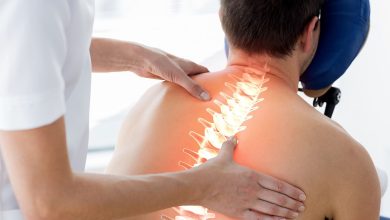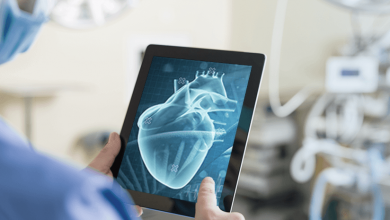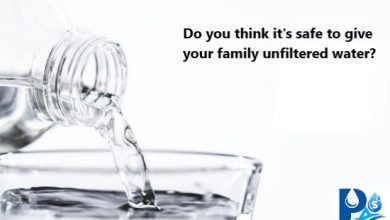Sleep Apnea Market: Devices that help Patients with Sleep Apnea

Sleep apnea refers to the sleeping disorder where a patient’s breathing periodically stops or gets shallow at night. It gradually happens at a short interval of time for 10-30 seconds. People with sleep apnea are at greater risk of depression, hypertension, heart stroke, diabetes, and anxiety. In some cases, patients do suffer from fatigue periodically due to sleeping problems. Sleep apnea can disturb a person’s health due to interrupted sleep. The excessive slow down of breathing can be fatal for the patient. However, a sleep apnea device helps to improve sleep by maintaining continuous air flow inside the airways. Notably, the sleep apnea device market is constantly evolving to provide more devices that help to improve sleep and overcome the risks associated with poor sleep.
Sleep apnea devices are the most common solution to treat sleeping disorders and prevent patients from health-associated risks due to uninterrupted sleep. Specific sleep apnea medical devices help to keep the nostrils/ airways open and improve sleep. The sleep apnea nasal devices are made of three main components, including the airway generator, the mast that connects with the airway, and the hose that connects to the generator. These devices come with a variety of features and settings that allow you to use devices according to the severity of the sleep apnea in the patients. Driven by the potential benefit of sleep apnea devices, several sleep apnea devices market players are considerably investing in the research and development of neurostimulation devices that help fight sleep apnea.
How Do Sleep Apnea Devices Work?
Sleep apnea devices help to deliver continuous pressurized air through tubing inside the mask you wear. These devices can help to treat sleep apnea depending on the type of disorder you have, such as:
▪ Obstructive Sleep Apnea: It occurs when dust particles or other things block the airways when you are trying to breathe while sleeping.
▪ Central Sleep Apnea: It occurs when an individual has a problem with their central nervous system. In such instances, the brain malfunctions and sends incorrect signals to your breathing muscles, which can lead to frequent stops and starts in your breathing. This kind of sleep apnea occurs far less frequently.
In both instances, sleep apnea nasal devices help with both types of sleeping disorders.
▪ The device helps to keep your nasal airways open, so there will be fewer chances of breathing blockage.
▪ The sleep apnea devices help to prevent the tongue and jaw from slipping down or the position that blocks breathing.
▪ Obstructive sleep apnea medical devices help to improve the muscle tone of your tongue so it does not block the airway when you are sleeping.
▪ The neurostimulation devices constantly monitor patients’ breathing patterns at night to ensure that airways remain open.
Types of Sleep Apnea Devices
Presently, sleep apnea devices market players have developed different types of sleep apnea devices that help to treat different types of sleeping disorders.
1. Positive Air Pressure Machines
This sleep apnea device uses light-forced air and pressure that pump the air into your nasal passage to ensure the patient’s airways remain open while sleeping. The positive airway pressure machines can be of the following types.
▪ Continuous Positive Airways Pressure Machines: It helps to flow air continually when a patient is sleeping.
▪ Bi-level Positive Airway Pressure Machine: It helps to deliver a different type of air pressure on the basis of patients’ breathing patterns.
▪ Adjustable Positive Airway Pressure (APAP): This type of sleep apnea nasal device allows patients to adjust the flow of air delivered into the airways on the basis of breathing patterns.
2. Neurostimulation Devices
The FDA has approved electrical neurostimulation devices for the treatment of sleep apnea disorder. Some common examples of neurostimulation devices that have been used for the treatment of sleep apnea include:
▪ Upper Airway Stimulation Device: Inspire® is a form of upper airway stimulation device that helps to monitor breathing patterns while sleeping. It delivers electrical nerve stimulations on the basis of breathing patterns to keep your airways open by passing air into the nasal passage. The device is surgically implanted inside you by the healthcare providers.
▪ Mouthpiece Electrical Pulse Stimulation: eXciteOSA® is a form of non-invasive electrical pulse stimulation device that delivers a pulse above or below the tongue in order to improve muscle strength and function. It also prevents slipping of the tongue back, blocking your airways. The mouthpiece can be used for a few minutes prior to sleeping.
3. Oral Sleep Apnea Devices
In recent times, sleep apnea companies have focused on the development of oral sleep apnea non-electrical devices that help to prevent tongue slipping and prevent jaw-dropping or sliding back, blocking the airways. Two types of oral sleep apnea medical devices have been used for the treatment of sleeping disorders.
▪ Mandibular Repositioning Mouthpieces: This device helps to hold the jaw in the right position.
▪ Tongue Retaining Devices: It helps to hold the tongue in place so it doesn’t slide back and block the airways.
It is worth noting here that the sleep apnea device only works when a person is suffering from a sleeping disorder due to tongue or jaw slipping or backing.
4. Positional Therapy Devices
In some cases, patients experience sleep apnea symptoms due to the wrong sleeping position or when they sleep on their back. The positional therapy devices help to keep you in a side position, which helps to improve the flow of air inside your airways. A patient can wear this device around the waist, back of the neck, and back. Sleep apnea medical devices help to prevent rolling over by initiating small vibrations that wake you up if you roll over your back. There are several types of positional therapy devices have been developed by the sleep apnea device market player including:
▪ Zzoma™ Pillow
▪ The Night Shift Sleep Positioners
▪ The Philips NightBalance Positional Sleep Therapy Device
Sleep Apnea Devices: A Step to the Better Sleep
An interrupted sleep may cause health issues such as depression, anxiety and low concentration of work. WIth ongoing efforts and advances in the technologies, sleep apnea devices help to improve sleep by managing the flow of air inside the airways. However, wearing a mask to improve airflow might be uncomfortable for an individual. Today, the sleep apnea market is looking forward to developing more implantable nerve stimulators for the patients with sleep apnea. As more technology devices are introduced into the market for the treatment of sleep apnea, it is anticipated that the market will expand into the future.
About Roots Analysis
Roots Analysis is a global leader in the pharma / biotech market research. Having worked with over 750 clients worldwide, including Fortune 500 companies, start-ups, academia, venture capitalists and strategic investors for more than a decade, we offer a highly analytical / data-driven perspective to a network of over 450,000 senior industry stakeholders looking for credible market insights. All reports provided by us are structured in a way that enables the reader to develop a thorough perspective on the given subject. Apart from writing reports on identified areas, we provide bespoke research /consulting services dedicated to serve our clients in the best possible way.




